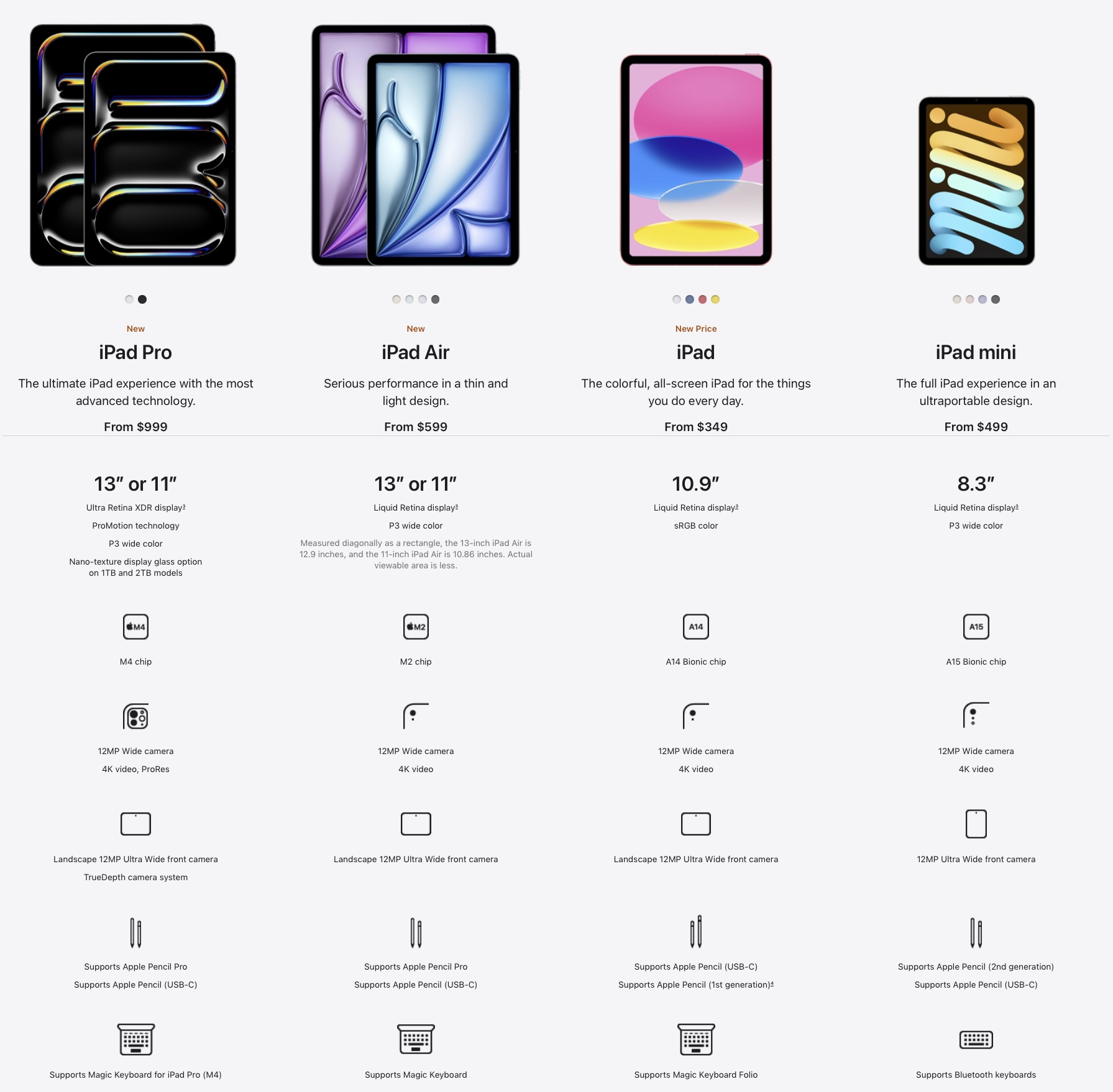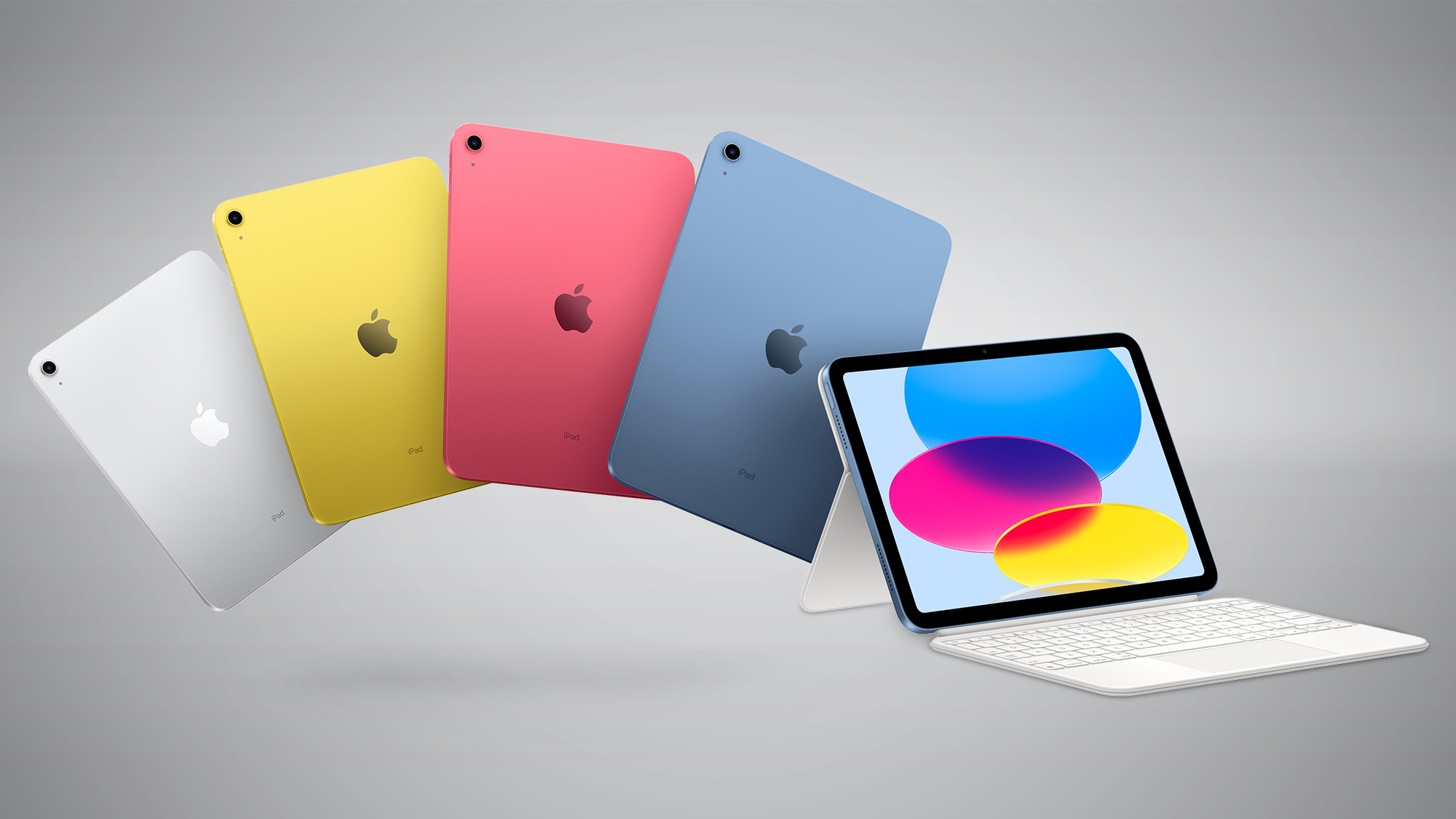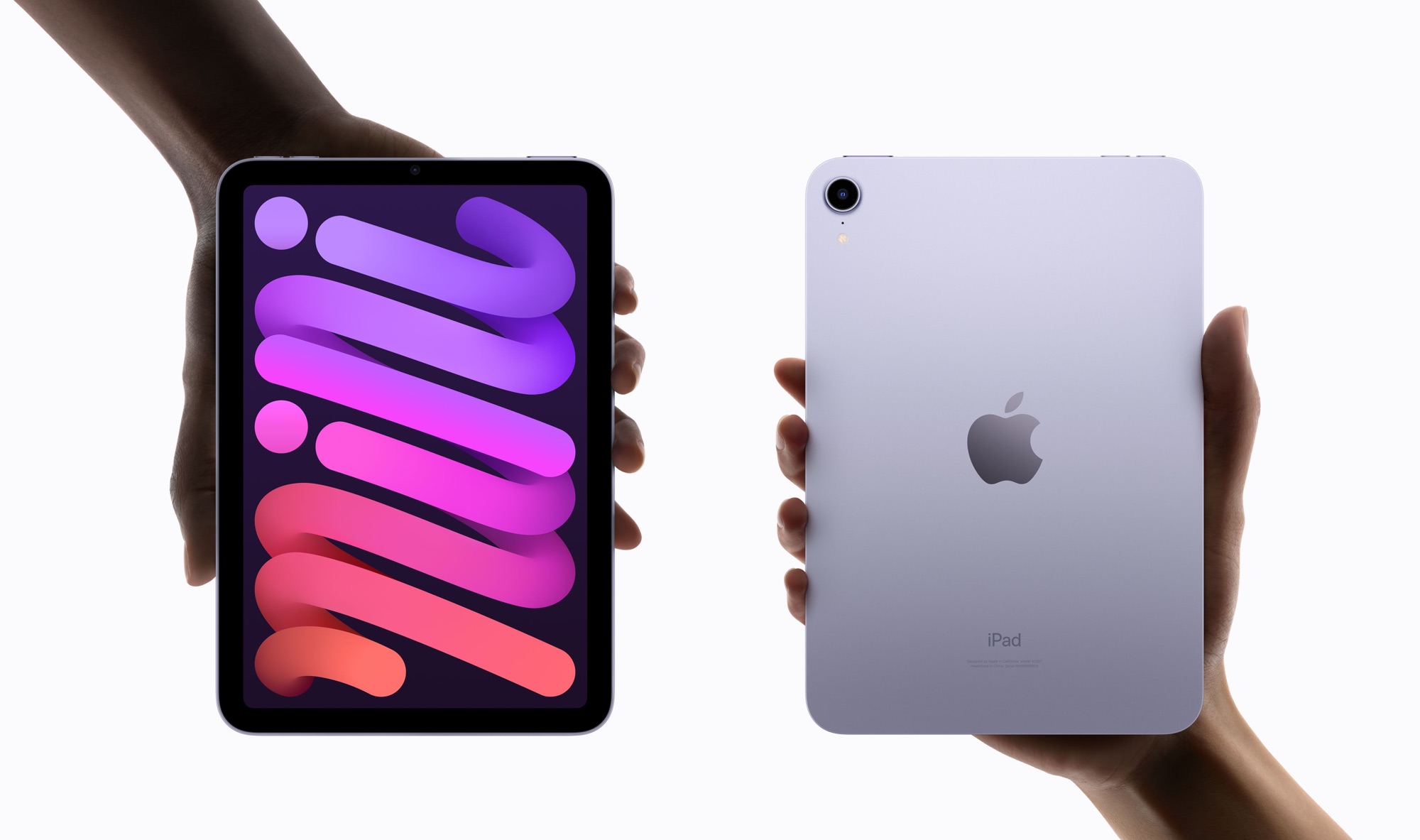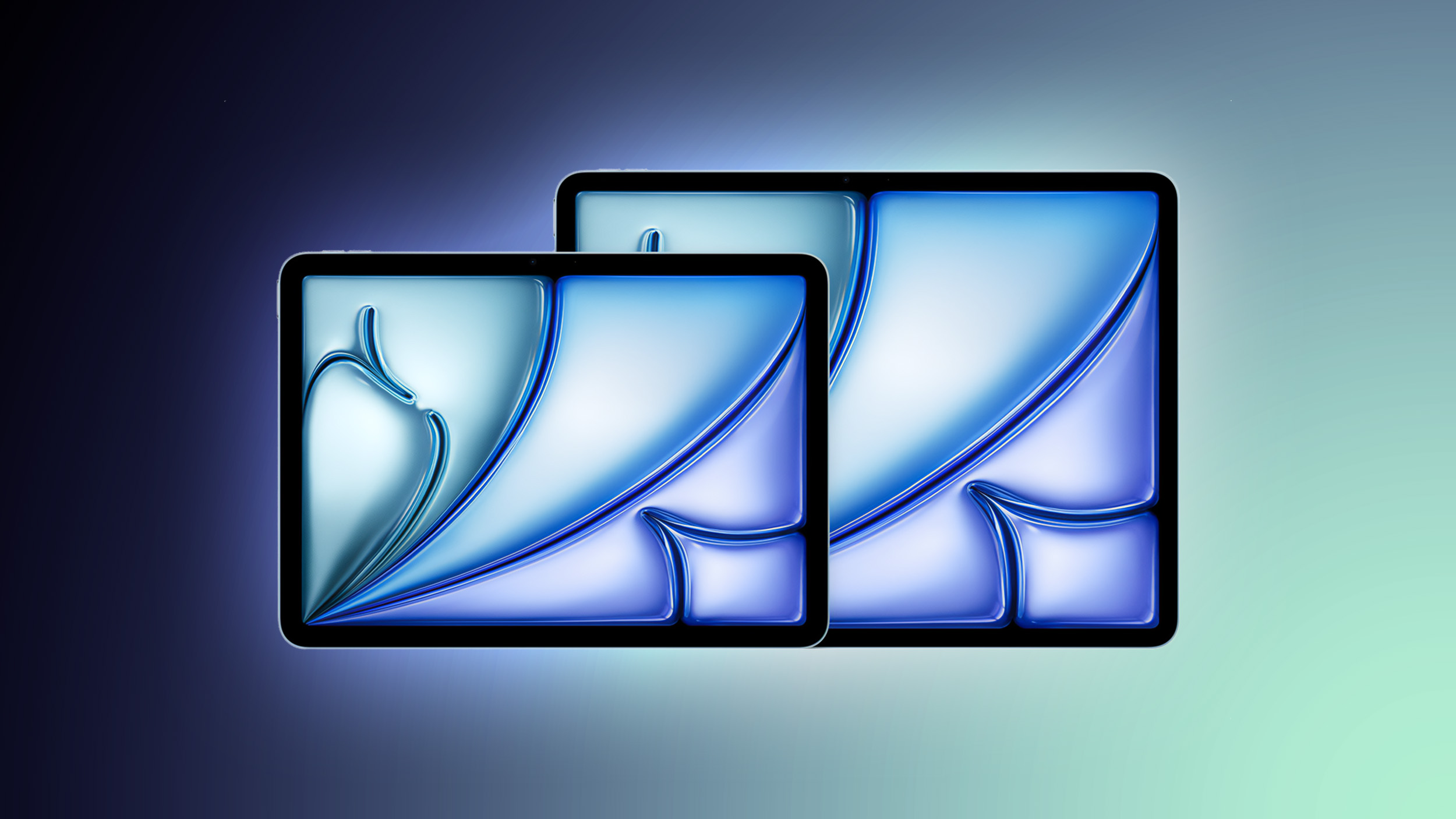
In May 2024, Apple introduced a major update for the iPad Pro, a smaller spec update and a new size for the iPad Air, and a price cut for the 10th-generation iPad, as well as the discontinuation of the 9th-generation iPad, making for the cleanest iPad lineup in quite some time. We're still expecting updates for the entry-level iPad and the iPad mini as soon as later this year, but for now we're taking a look at how the various models compare to help potential buyers choose which one is right for them.
iPad Comparison

Which iPad Is Right for You?
To address the elephant in the room, 2023 marked the first time since the introduction of the original iPad in 2010 that Apple did not update a single model in the lineup. That's starting to change as of mid-2024, but at the moment we have a combination of freshly updated models and ones that are quite long in the tooth, so read on below for help with your buying decision!
If price is your biggest consideration, you'll want to look at the standard 10th-generation iPad, knowing that it contains some older technologies and limitations but is still plenty good enough for many users. If you're looking for portability, check out the iPad mini, and if you want a mid-sized iPad with more to offer than the entry-level iPad, check out the iPad Air, which is now available in two sizes.
What about the iPad Pro? Apple's high-end iPads are in a class of their own, and it shows in their higher prices. Unless you're a pro-level user or price is no object, you'll probably want to look to cheaper options, but the iPad Pro models deliver cutting-edge technology for those who need it.
With that quick overview out of the way, let's take a look at what each model has to offer.
iPad Models
10.9-inch iPad
Apple's 10th-generation version of the iPad has a 10.9-inch display and the A14 Bionic chip, and as of May 2024 it starts at $349 for the Wi-Fi only model. This is the cheapest iPad currently sold by Apple, and it offers a good mix of features, although it was released in October 2022 so it's definitely getting up there in age.
It has an entirely updated design compared to the previous generation, ditching the Home button and adopting the slim bezel design of the iPad Air and iPad Pro. It does still have Touch ID, but it's been moved to the power button on the top edge of the device. It also adopts USB-C instead of Lightning, and it has an improved 12MP Wide rear-facing camera.

This is still on the low end of the iPad family lineup, however, so you won't get support for the Apple Pencil 2 (only the first-generation model or the USB-C model) and storage caps out at 256GB.
Key specifications include:
- A 10.9-inch Liquid Retina display with True Tone
- Side button with Touch ID
- A14 Bionic chip
- 12MP Wide back camera and 12MP Landscape Ultra Wide front camera
- First-generation Apple Pencil and Apple Pencil with USB-C compatibility
- Magic Keyboard Folio compatibility
- USB-C port
- Available in Blue, Pink, Silver, and Yellow
iPad mini
Next up is the iPad mini, which starts at $499 for Wi-Fi only models. That's $100 more than the previous generation's starting price, but the September 2021 update brought a massive upgrade to Apple's smallest tablet. Yes, that's right, the iPad mini is almost three years old now, and we're looking toward an update in the latter part of 2024, but the current model is still a sufficiently powerful device for most users.
With a display size of 8.3 inches, you can't quite call it pocketable, but the iPad mini is definitely great for having something small on the go that still offers a much larger screen size than even Apple's largest iPhones.

Looking beyond the display size, this is a capable device using the same A15 Bionic chip from the iPhone 13 (albeit running slightly slower), so it's a fairly speedy tablet. You'll get an improved display compared to the entry-level iPad, a 12-megapixel rear camera with LED flash, and support for the more advanced second-generation Apple Pencil.
Key specifications include:
- Fully laminated 8.3‑inch Liquid Retina display with True Tone
- Touch ID in the power button
- A15 Bionic chip with 5-core graphics and 16-core Neural Engine
- 12MP Wide back camera with Smart HDR 3 and 4K video
- 12MP Ultra Wide front camera with Smart HDR 3 and 1080p HD video
- Landscape stereo-speaker audio
- Second-generation Apple Pencil compatibility
- Bluetooth keyboard compatibility
- USB-C port
- Available in Space Gray, Pink, Purple, and Starlight
Moving toward the higher end of the iPad family is the iPad Air, which has just been updated in May 2024 and now comes in two sizes, 11 inches and 13 inches. The smaller model starts at $599 for Wi-Fi only connectivity, while the larger model starts at $799. The iPad Air is the perfect mid-tier option that offers many of the same features as the top-of-the-line iPad Pro but at a lower price point, and the fact it's brand-new means this is a great option for many users.

Key specifications of the iPad Air include:
- Fully laminated 11‑inch or 13-inch Liquid Retina display with True Tone
- Touch ID in the power button
- M2 chip
- 12MP Wide rear camera with Smart HDR 4 for photos and 4K video at up to 60 fps
- Landscape 12MP FaceTime HD front camera with Smart HDR 4
- Apple Pencil Pro and Apple Pencil with USB-C compatibility
- Magic Keyboard and Bluetooth keyboard compatibility
- USB-C port
- Available in Space Gray, Blue, Purple, and Starlight
iPad Pro
If you're looking for true portable workstation power, then the last two iPads in the lineup, the iPad Pro models, could be what you're interested in. These tablets were updated in May 2024 with an all-new M4 chip, OLED displays, thinner designs, higher starting storage capacities, and more.
These iPads, which start at $999 fo... Click here to read rest of article
Article Link: Picking the Best iPad to Buy in 2024
- Article Link
- https://www.macrumors.com/guide/best-ipad-to-buy/
Last edited:


